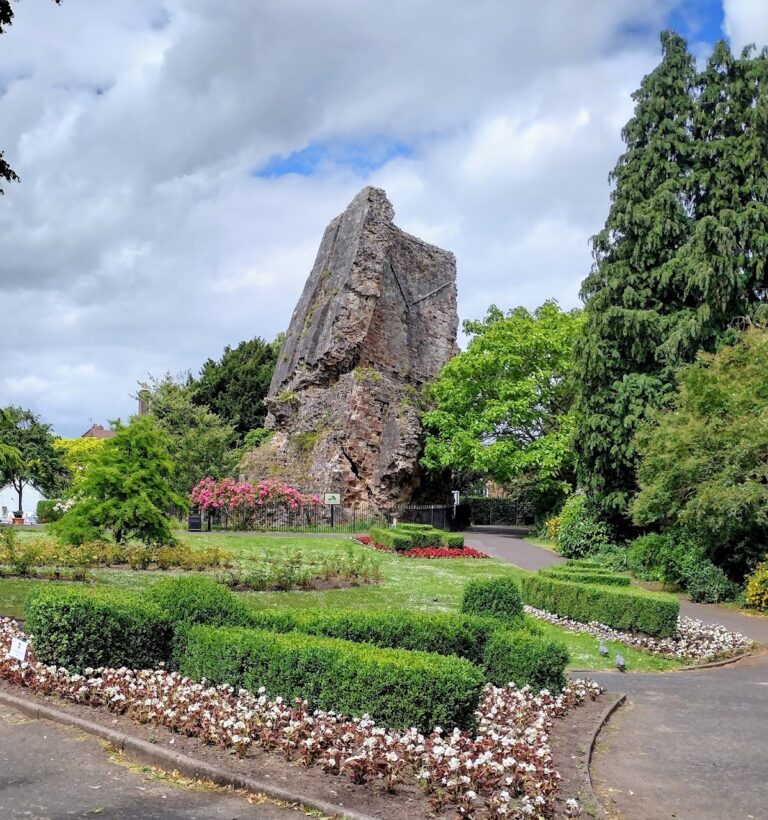Dudley Castle: A Historic Norman Fortification in the West Midlands
Visitor Information
Google Rating: 4.4
Popularity: High
Google Maps: View on Google Maps
Official Website: www.dudleyzoo.org.uk
Country: United Kingdom
Civilization: Medieval European
Remains: Military
History
Dudley Castle stands on Castle Hill, a limestone outcrop in Dudley, West Midlands, England. It was first established shortly after the Norman Conquest around 1070 by Ansculf de Picquigny or his son William Fitz-Ansculf. Initially, it was a wooden motte and bailey fortification, as recorded in the Domesday Book of 1086.
In the early 12th century, the Paganel family replaced the wooden structures with stone. Their castle endured a siege in 1138 during King Stephen’s reign. However, after Gervase Paganel rebelled in 1173, King Henry II ordered the castle’s demolition, removing much of the stonework.
Starting in 1262, the Somery family undertook a major rebuilding project that extended into the 14th century. This phase produced the stone keep and main gatehouse. Later, under John Sutton II, a chapel and great chamber were added, enhancing the castle’s residential and religious functions.
Ownership passed through several families, including the Suttons and John Dudley, Duke of Northumberland. Around 1540, Dudley commissioned the Sharington Range, a three-storey complex reflecting early Italian Renaissance styles, designed by architect William Sharington.
During the First English Civil War, Dudley Castle served as a Royalist stronghold. It was besieged in 1644 and surrendered in 1646. Following the war, Parliament ordered the castle to be partially demolished, or “slighted,” to prevent further military use.
After the Civil War, some buildings remained habitable but were mostly destroyed by a fire in 1750. In the 19th and early 20th centuries, the site hosted public fêtes and pageants. In 1937, Dudley Zoo was established within the castle grounds.
Historically, the castle was part of Sedgley in Staffordshire until 1926, when boundary changes incorporated it into Dudley borough. Castle Hill itself was heavily quarried during the Industrial Revolution and is now a scheduled monument. The castle is a Grade I listed building and was added to Historic England’s Heritage at Risk register in 2020.
Remains
Dudley Castle occupies an oval-shaped site approximately 100 meters north to south and 80 meters east to west. It features a motte and bailey layout typical of Norman fortifications. The motte is a mound about 9 meters high, built with a core of limestone rubble covered in clay, originally surrounded by a moat that may have been wet or dry. The bailey is enclosed by a dry moat.
The 13th-century keep sits atop the motte. It is slightly rectangular, measuring roughly 15 by 22 meters, with four large drum towers at each corner, each about 9.8 meters in diameter. After the Civil War slighting, only the north side and parts of two drum towers remain visible.
East of the keep lies the main gatehouse, mainly dating from the post-1262 rebuilding by the de Somery family. It includes some Norman elements from the earlier Paganell castle. The gatehouse originally had a double gateway with two portcullises, three floors containing portcullis machinery and a guardroom, and battlements above. Later, a barbican called the ‘Triple Gate’ was added. A thick curtain wall once connected the gatehouse to the keep.
The great chamber and chapel block, likely built under John Sutton II and remodeled during the Tudor period, stood in ruins before the 1750 fire. The Sharington Range, constructed around 1540 for John Dudley by William Sharington, was a three-storey building with a great hall, kitchen, servery, buttery, cellars, and bedrooms. It was destroyed in the 1750 fire.
A stable block dating from before 1700 is located between the main gate and the motte base. It was once mistaken for lodgings but is now identified as stables and was the last building added to the site.
Downhill from the main gate are an Elizabethan gatehouse and a round east watch tower, connected by a wall. Both date from the Elizabethan era and served defensive and surveillance purposes.
Two Russian cannons captured during the Crimean War were installed in 1857 on the remains of the two south-facing drum towers. The castle grounds also include a visitor centre opened in 1994, featuring a computer-generated reconstruction of the castle as it appeared around 1550, representing an early use of virtual tour technology.










